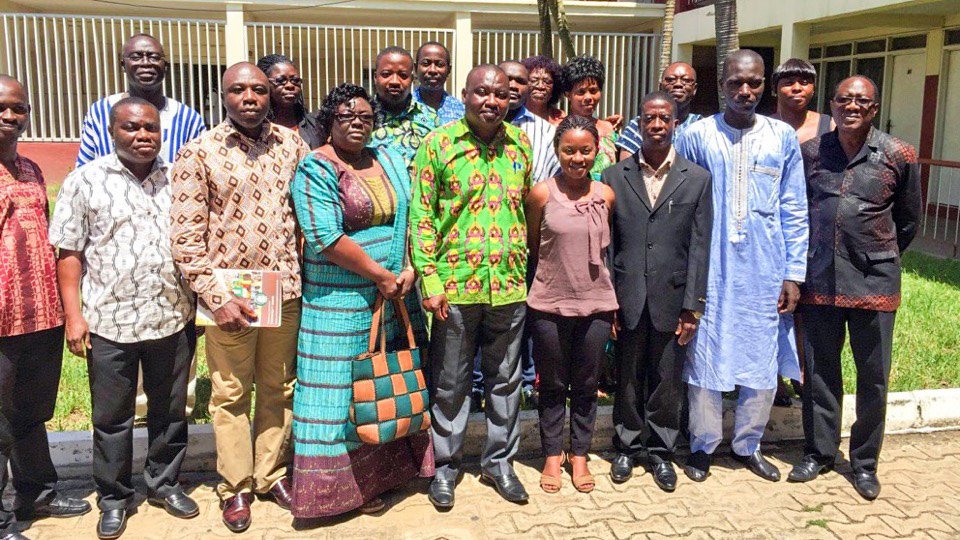ADEA’s role on education management information systems in Africa
Presentation of the work carried out by ADEA’s Working Group on Education Management and Policy Support (WGEMPS)
In 2006, the African Union (AU) committed to monitoring education management information systems (EMIS) under the Plan of Action for the Second Decade of Education in Africa. As the second priority area, EMIS were recognized as a cross cutting and enabling factor in the achievement of the goals of the Second Decade.
This is the ninth blog post in a series of collaborations between the Association for the Development of Education in Africa (ADEA) and the Global Partnership for Education (GPE).
In 2006, the African Union (AU) committed to monitoring education management information systems (EMIS) under the Plan of Action for the Second Decade of Education in Africa. As the second priority area, EMIS were recognized as a cross cutting and enabling factor in the achievement of the goals of the Second Decade.
Collaborating across organizations to develop common indicators
From 2008, the ADEA Working Group on Education Management and Policy Support (WGEMPS) – based in Harare, Zimbabwe – has served as the technical partner of the Education Division of the African Union Commission’s Department of Human Resources, Science and Technology (AUC-HRST) particularly regarding EMIS. This partnership has led to a series of developments in the sector.
In 2008 for example, the HRST issued an indicators manual for monitoring the implementation of the Plan of Action, developed in partnership with WGEMPS.
The group has also collaborated with associated AU observatories, in particular the Pan African Institute for Education and Training (AU/IPED) and the International Centre for Girls’ and Women’s Education in Africa (AU/CIEFFA).
The EMIS Initiative takes shape
Together with these and other partners, WGEMPS drove the AU EMIS Initiative, which saw the identification and development of 55 indicators for tracking country performance in implementing the Plan of Action.
A series of reports were produced in 2010, 2012 and 2014 tracking these 55 indicators. These reports were used at the Conference of Ministers of Education of the African Union (COMEDAF).
The working group along with the African Union and IPED oversaw the training of several country representatives on key EMIS aspects and even developed school records management modules in 2010.
Today, the continent has a corps of country-level EMIS specialists at the forefront of planning for the education sector.
Other efforts in the EMIS sector include the development of EMIS capacity building strategies within regional economic communities (REC). A key element of these strategies is the use of a set of EMIS norms and standards, which RECs customize and use to conduct peer reviews.
The Southern African Development Community (SADC), the Economic Community of West African States (ECOWAS), the Economic Community of Central African States (ECCAS) and the East African Community (EAC) are at different phases of implementing their EMIS strategies.
Case Study: Mali
In late 2016, the ADEA Working Group on Education Management and Policy Support (WGEMPS) and its partners (the Economic Community of West African States Commission- ECOWAS- and the African Union Commission), in line with the ECOWAS EMIS Norm and Standard Monitoring Framework, conducted a peer review of Mali’s regional and continental Education Management and Information Systems (EMIS).
The review was done with a strong engagement of the national EMIS team established for this purpose, as well as peers from Burkina Faso, Togo, ECOWAS and ADEA. The evaluation was carried out based on evidence gathered through field visits at the central and decentralized levels, meticulous reviews of tools and systems, interviews of key stakeholders involved in education statistics production and Mali’s technical and financial partners.
The review report concluded that Mali produces « questionable statistics » with an average global rating of 2.5 out of 4. While statistics legal framework and production processes are generally satisfying, appropriate and sufficient human, physical and financial resources availability, timely data dissemination and user need considerations have had a negative impact on the EMIS evaluation.
The case of Mali, where only one entity manages statistics production for all sub-sectors, should be shared with other ECOWAS countries. Mali’s partners have subscribed to the review and expressed their availability to support Mali in the implementation of the recommendations issued with ADEA’s technical support.
Case Study: Ghana
The peer review conducted in May 2015 obtained a score of 3.1 out of 4. Ghana’s EMIS, in line with the ECOWAS EMIS Norms and Standards, produces acceptable statistics. The review was conducted with strong engagement by the national EMIS team, as well as peers from Gambia, Mali, Nigeria, the African Union, ECOWAS, and ADEA.
Overall, Ghana is a good example of education statistics production and dissemination. It has an EMIS development plan and was very often able to answer enquiries from the UNESCO Institute of Statistics (UIS), as well as other regional entities.
Despite these performances, there are some deficiencies, including (i) private sector data coverage, (ii) relatively low EMIS budget, (iii) outdated communication and information technology infrastructures, and (iv) the lack of qualified human resources at the decentralized level. Recommendations were issued by the peers in order to overcome these challenges.
Lessons from peer reviews
An evaluation of the impact of these peer reviews found that in the countries where they have been conducted, they achieved what they were tasked to do in terms of purpose, specific objectives, and activities.
In Swaziland and Mozambique, peer reviews resulted in greater visibility of the EMIS unit. They catalyzed decisions to acquire and use new software and make improvements in EMIS data collection in Ghana, Mozambique and Swaziland.
Critically, the evaluation served as a springboard for the launch of a revised approach to EMIS by ADEA in Africa. Going forward ADEA will become a champion for the implementation of EMIS peer review recommendations.
ADEA’s EMIS peer review model
ADEA’s peer review model was also used to conduct an independent assessment of EMIS in 17 States in Nigeria in 2016. This activity was commissioned by the Federal Ministry of Education, the Nigerian Management of Information System (NEMIS), the Nigerian National Bureau of Statistics (NBS), UNICEF and the United Kingdom Department for International Development (DFID) – Education Sector Program in Nigeria (ESSPIN).
Its objectives were to evaluate the Nigerian EMIS at State and Federal levels in order to craft a road map based on the recommendations to improve the quality of the EMIS data. The exercise established the baseline, identified gaps, shortcomings and opportunities as well as strategies to ensure the availability quality education data to support the national development agenda.
Higher education management information systems (HEMIS)
Over the past few years, WGEMPS has also been building capacity in higher education management information systems, a poorly integrated sector that struggles to provide internationally comparable data.
Most recently, WGEMPS organized a technical workshop on HEMIS benchmarking. This was done in partnership with the Working Group on Higher Education and the Association of African Universities in Accra, Ghana. University representatives were capacitated on what data to provide, identifying needs and best practices.
Next steps
Under the auspices of the African Union Specialized Technical Group on Science, Technology and Education (STG-STE), a list of core indicators to track progress on the Continental Education Strategy for Africa 2016-2025 (CESA 16-25) goals will be finalized in 2017.
These indicators will be used in the Continental Education Report and will be duly informed by the CESA Strategic Objectives such Strategic Objective 7, which is to ‘Promote STEM education to build knowledge societies, scientific literacy and innovation culture’.
Partnerships in 2017 with various RECs such as ECOWAS and SADC continue to be strengthened. At the country level, ADEA/WGEMPS developed road maps on the implementation of recommendations following EMIS peer reviews in Mali and Uganda and has begun preparations to implement sector wide EMIS projects in Angola, Egypt, Morocco for 2017.
The working group will keep on relying on the corps of EMIS specialists housed in various Ministries of Education and whom WGEMPS supported as part of its vision for the attainment of all educational goals.









